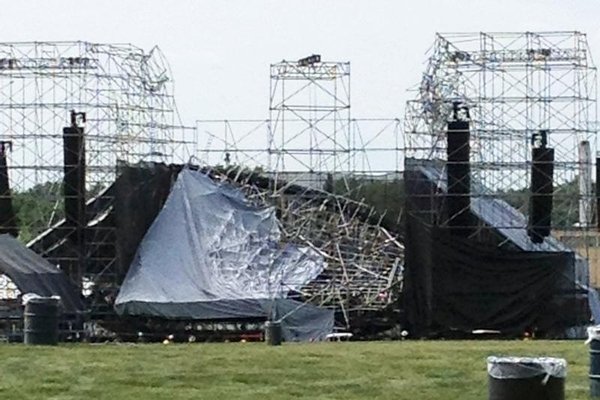Charges thrown out due to excessive delays

On Sept. 5, Justice Nelson of the Ontario Court of Justice stayed (threw out) all charges against the accused in the deadly stage collapse at a Radiohead concert in Toronto five years ago. These charges under the Occupational Health and Safety Act (OHSA) are the latest in a series of serious quasi-criminal and criminal charges across Canada that have been stayed as a result of the Jordan decision of the Supreme Court of Canada.
This case raises three important issues: First, why did the case take so long? Second, what is the Jordan decision and why did it result in a stay of the OHSA charges? Third, is the costly, complex and challenging prosecution process the best legal means of holding workplace stakeholders responsible for safety contraventions?
Radiohead, a British band, was scheduled to perform at a concert in Toronto at Downsview Park on June 16, 2012. A number of hours prior to the start of the concert, the stage superstructure collapsed. Scott Johnson, a drum technician, died. Three other workers were seriously injured.
On June 6, 2013, the Ontario Ministry of Labour laid charges against a number of parties under the OHSA including Live Nation Canada, Optex Staging and Services and the professional engineer who provided advice and engineering drawings and certification, Domenic Cugliari.
The case was serious and complex. It proceeded to trial in November 2015, before Justice Nakatsuru. Although there had been an application for delay after the Jordan decision was released by the Supreme Court of Canada in early July 2016, it was rejected by the first trial judge. However, on April 12, 2017, weeks before the final, closing argument was to be made on the trial, Justice Nakatsuru was appointed to the Ontario Superior Court of Justice. As a result, and under directions from the federal Department of Justice not to do any further work on any matter, Justice Nakatsuru ruled that he had no jurisdiction to continue the trial and declared a mistrial.
The mistrial resulted in the appointment of a new trial judge and new court dates. On Sept. 5, 2017, Justice Nelson stayed all charges against the accused and said, in summarizing her ruling, “(This) signals a failure on the part of the administration of justice. Such a failure impairs the reputation of our justice system. In a case such as this one, that failure also has a significant negative impact on the parties, those injured as a result of the stage collapse and most notably on the family of Scott Johnson. No doubt this decision will be incomprehensible to Mr. Johnson’s family who can justifiably complain that justice has not been done.”
The policy and practise of the Department of Justice and the federal government to not allow Justice Nakatsuru to complete the trial, which was in its final stages, was bizarre and inexplicable. In her reasons for judgment, Justice Nelson points out that Justice Nakatsuru would have known that he was presiding over this trial when he applied to the Superior Court bench thus risking the mistrial. Additionally, the provincial government failed to pass legislation which would have permitted Justice Nakatsuru to complete the trial.
So what exactly is the Jordan decision and how does it apply to OHSA charges in the Radiohead case? Jordan was a July 8, 2016 decision of the Supreme Court of Canada that simplified the right of an accused to a trial within a reasonable period of time, a constitutional right under section 11(b) of the Charter of Rights and Freedoms. Previous to Jordan, the Supreme Court had set a high bar to establish a violation of the “speedy trial” rights. In Jordan, the court held that a culture of complacency had crept into the Canadian judicial system and lengthy, unacceptable delays were the norm. Therefore, it set an 18-month presumption maximum period of delay between the laying of charges to the conclusion of the trial.
The trial justice in the Radiohead case held that even if one was to give 30 months to complete this type of trial, rather than the presumptive 18 months, the delay still far exceeded that period of time — the case was in the judicial system for almost five years.
The obvious failure on the part of the federal and provincial governments to have legislation that contemplated an Ontario Court of Justice being appointed by the federal government to the Ontario Superior Court of Justice is without rationale, explanation or excuse. No politicians were prepared to comment on the Radiohead decision, in particular both the provincial and federal attorney generals, who have responsibility for ensuring that the administration of justice is performed in accordance with Constitution and charter values.
This brings us to the third question: Is the prosecution process the best way to enforce OHSA standards? The obvious answer is a resounding “no.” Prosecution may be the worst method of achieving the goal of improving workplace safety. The resources of health and safety regulators would be better invested in other strategies to set, communicate and enforce OHS standards.
Although health and safety prosecutions may satisfy victims and their families, there is little evidence that prosecutions prevent future accidents. However, the Radiohead case and the stay of the charges will not likely change the regulators’ view on how to enforce OHS laws in Canada. The failure to have a decision on the merits, even considering the exceptional circumstances of this case, is a failure of the justice system, plain and simple.






